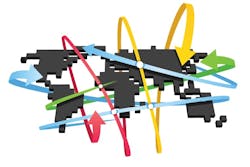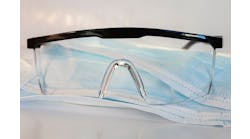I’ve been occupying a considerable amount of my time lately with understanding the challenges of marketing complex products in different collision repair markets throughout the world. To put this into perspective, one of the pieces of equipment we supply to support our Bodyshop Revolution process consists of a gas catalytic robotic arch, which dries paint in less than one minute. In Europe, we’ve had this technology for about 10 years, but in other parts of the world, such as the U.S., Australia and the Middle East, it is almost unheard of.
One of our goals this year is to bring some of our technology and processes into the U.S., Canada and Mexico. And not to put it too lightly, it’s certainly been challenging. We have been supplying this Italian Robotica equipment in the U.K. and Europe for about four or so years. On the whole, it’s been reasonably straightforward because in the European community, equipment can be self-certified by the manufacturer to meet fire, gas, electrical and hazardous area regulations. This means we can self-test the equipment and sell it directly to body shops, connect to a gas supply ourselves and fire the thing into life, with no outside contractors or authorities involved.
Not so in other parts of the world. The most difficult markets are the U.S. and Canada, closely followed by the Australian states. And here’s the challenge: You can’t even sell a humble kettle in the U.S. without it being independently certified. What’s more, it must conform to Underwiters Laboratories (U.L.) specifications. This means that every electrical component within the kettle must be a U.L.-certified part, or have to be U.L.-certified separately. A kettle is a simple device, but now try to do that with a 400-pound gas catalytic arch that uses three-phase power, five-volt circuitry, pressurised gas, compressed air and has to work in a hazardous, Class 1, Division 1 environment!
Simple? No.
Now I know this is slightly off the subject of my typical ramblings, but I think it’s quite an interesting point in that it shows how differing regulations mean that people who supply this industry have to meet stringent demands to get their products to market. For instance, in the U.K. and Australia, a spray booth is not deemed to be Class 1, Division 1 if it changes air more than five times per minute.
In other countries this is not so. So when you design a piece of technology, you either have to manufacture several individual products that meet local regulations, or go all-out to try to develop a ‘world’ product that meets every standard. That’s what we’ve done with our robots, and that’s what vehicle manufacturers are also working to achieve.
Ford’s first real global product was the new Fiesta, and all subsequent models I believe will fit this model. This means that wherever they are manufactured in the world, all Fiestas are, in fact, the same vehicle, albeit with significant changes such as left- or right-hand drive. (Actually, here’s an interesting fact: there are 77 countries in the world that drive on the left-hand side of the road.) Taking things further, Volkswagen has now developed a new global platform called MQB, which doesn’t just cross global boundaries, but specific vehicle models as well, so the new Golf will fundamentally have the same platform as the Passat and Audi A4, A3, A1, etc.
What’s really interesting is that by using these flexible platforms and adopting global standards, the cost of manufacturing comes down, which means that the technology loaded onto these cars is now very high-tech. For instance, on the new Golf 7, you cannot remove the front bumper without having to reset the ECU and calibrate the lane-changing radar module. Now that’s a challenge for all but a few manufacturer-approved facilities.
Because of this globalization and introduction of more and more technology on vehicles, we’ve even experienced situations in which manufacturers have refused to supply prestige vehicles to main dealers because their body shop could not repair to the approved standard. Now when that happens, dealers are very quick to sign orders to upgrade their shops and introduce manufacturer training programs. Interesting how this focuses the mind!
Back to gaining the global certification for our robots, we’re nearly there, and I hope we can ship the first demonstration units by July, giving U.S. shops a real taste of some of the efficiencies we’ve been able to achieve in the U.K.
Jon Parker is managing director of the Byteback Group, a U.K.-based information technology and services company aimed at advancing the collision repair industry. Parker can be reached at [email protected].



